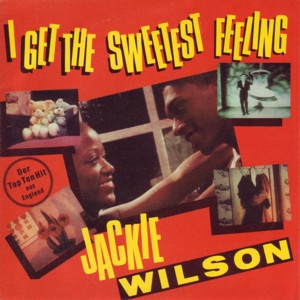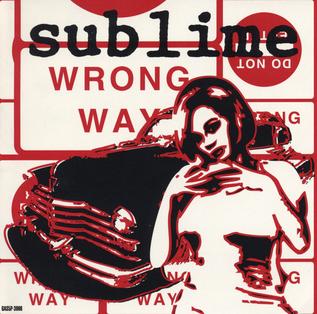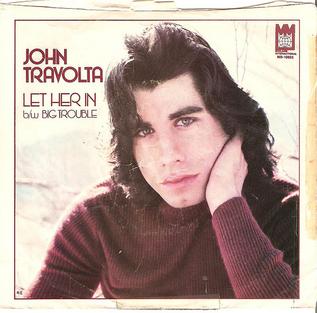
Inspired by Black Music Month, LGBTQ Pride Month, the passing of Bonnie Pointer, and the June 9 birthdays of Jackie Wilson, The Chemical Brothers’ Ed Simons, Muse’s Matt Bellamy, Les Paul, Johnny Ace and composer Cole Porter.

Inspired by Black Music Month, LGBTQ Pride Month, the passing of Bonnie Pointer, and the June 9 birthdays of Jackie Wilson, The Chemical Brothers’ Ed Simons, Muse’s Matt Bellamy, Les Paul, Johnny Ace and composer Cole Porter.

Inspired by the February 23 birthdays of Japan’s David Sylvian, Josh Gad, Howard Jones and Broadway composer Robert Lopez; the February 22 birthdays of Sublime’s Brad Nowell, Marni Nixon, Ernie K-Doe, Bobby Hendricks, Oliver and Guy Mitchell; and the February 21 birthdays of Nina Simone, Mary Chapin Carpenter and Manic Street Preachers’ James Dean Bradfield.

I’m experimenting here at Tunes du Jour. Yesterday I started including multiple songs by the birthday performers who inspired that day’s playlist. As of today I’m not limiting myself to twenty songs. My thinking is that by removing that restriction I can posts playlists (almost) dailier and you get a deeper dive into some of the artists. I’m living on the edge!
Today’s playlist is inspired by the February 18 birthdays of Regina Spektor, Yoko Ono, Styx’s Dennis DeYoung, John Travolta, Randy Crawford, Juelz Santana, Irma Thomas, Juice Newton, and Space’s Tommy Scott.
Today is the day after Thanksgiving here in the United States of America. You’re officially allowed to start listening to holiday music now. To get you started, I compiled a playlist of what I consider to be 100 of the best Christmas songs. Okay, 98 songs, a stand-up routine and a skit. It’s a mix of standards, versions of standards with which you may not be familiar, and obscure but delightful tunes.
Enjoy!
Click here to like Tunes du Jour on facebook!
Follow me on Twitter: @tunesdujour
Follow me on Instagram: @glennschwartz
Blackboard Jungle hit US theaters on March 25, 1955. The plot concerned the arrival of a new teacher at a violent inner-city school. The producers wanted a theme song that was typical of what a 1955 teenager would listen to. Glenn Ford, who starred in the film alongside Anne Francis and Sidney Poitier, looked through his son’s record collection. In there, the theme song was found.
It was the b-side of a single entitled “Thirteen Women (And the Only Man in Town)” that had been released the prior year. When the song was used under Blackboard Jungle’s opening credits, that flip-side, “(We’re Gonna) Rock Around the Clock,” performed by Bill Haley and His Comets, went to #1 in the US, and is considered to be the first rock and roll song to do so. It became a smash elsewhere in the world, too, becoming the UK’s first million-selling single.
The classic guitar solo on the track was performed by Danny Cedrone, who was not one of Haley’s Comets but a session musician who had worked with the group previously. He got paid $21 for his contribution to the track. Cedrone took a tumble on a stairway and died shortly after the song was recorded, not living to see its success, let alone its iconic status.

Tunes du Jour’s Throwback Thursday playlist this week spotlights the year 1955, kicking off with Bill Haley and His Comets’ “(We’re Gonna) Rock Around the Clock.”
Click here to like Tunes du Jour on Facebook!
Follow me on Twitter: @TunesDuJour
Follow me on Instagram: @GlennSchwartz
Between the British invasion, the growth of Motown, and the girl group sound, many arguments could be made as to why 1964 was the best year for pop music. Here are twenty:
Click here to like Tunes du Jour on Facebook!
Follow me on Twitter: @TunesDuJour
Follow me on Instagram: @GlennSchwartz
On the fourth of July in 1776, the Declaration of Independence, in which the thirteen American colonies declared their independence from Great Britain, was adopted.
None of the songs in today’s playlist address the events of 1776 directly. However, the song selection is inspired by our 4th of July holiday.
Besides being great songs on their own, the collection represents one of the great things about the United States – its diversity. Long considered a melting pot where people of different backgrounds and beliefs could come to achieve their dreams and goals, the U.S. of A. is powerful and innovative as a result of this blend of people. Today’s playlist represents this diversity with a blend of genres – rock, funk, pop, Broadway, new wave, soul, and then some. Despite our differences, we are one nation, under a groove, with liberty and justice for all.
Whether or not you celebrate Independence Day, enjoy this Fourth of July-inspired playlist.
Click here to like Tunes du Jour on Facebook!
Follow me on Twitter: @TunesDuJour
Follow me on Instagram: @GlennSchwartz
The girl group sound was hugely popular on the US pop charts in the early 1960s. The Shirelles, The Crystals, The Chiffons, The Angels, Martha and the Vandellas, The Marvelettes, The Exciters, The Orlons, The Cookies, The Murmaids, The Dixie Cups, The Supremes, The Toys, The Shangri-Las, The Jaynetts and others filled the radio with tales of teenage romance, heartbreak and occasionally social commentary. Solo acts such as Lesley Gore and Darlene Love also exemplified the girl group sound.
Described in the Library of Congress’ National Recording Registry as “the quintessence of the ‘girl group’ aesthetic of the early 1960s,” the Ronettes’ “Be My Baby” reached #2 in 1963. The record was produced by Phil Spector, who produced at least 15 top forty girl group songs between 1962 and 1964.
Lead vocals on “Be My Baby” were performed by Ronnie Spector. In fact, the other Ronettes aren’t even on the record. Backup singers included the girlfriend of Phil Spector’s promotion man. That man was Sonny Bono; his girlfriend was Cher. Sonny & Cher would have their first hit as a duo two years later.
This week’s Throwback Thursday playlist spotlights the hits of 1963. Here are twenty of that year’s best, kicking off with the record New Music Express named the second best song of the 1960s (their #1 was The Beatles’ “A Day in the Life”), the Ronettes’ “Be My Baby.”
Click here to like Tunes du Jour on Facebook!
Follow me on Twitter: @TunesDuJour
Follow me on Instagram: @GlennSchwartz
From 1958 to 1960, Ben E. King was the lead singer of The Drifters, scoring hits with “There Goes My Baby,” “Save the Last Dance for Me,” “This Magic Moment” and “I Count the Tears.” He suggested to the group’s manager, George Treadwell, that they record the spiritual tune “Stand by Me Father,” but Treadwell turned him down. King also asked Treadwell for a greater share of the group’s royalties. Again, Treadwell turned him down. King said goodbye.
King left the group after recording just thirteen songs with them. He soon made the top ten as a solo act with 1961’s “Spanish Harlem.”
Around that time, King was working on a song based on “Stand by Me Father.” He had some lyrics and a melody. He finished the lyrics with his producer, Jerry Leiber. Leiber’s songwriting/production partner, Mike Stoller, added some chords behind the melody, as well as a bass line.
Per Leiber, it’s that last addition that makes Ben E. King’s “Stand By Me” a classic. “The lyrics are good, King’s vocal is great. But Mike’s bass line pushed the song into the land of immortality. Believe me – it’s the bass line.”
“Stand By Me” kicks off this week’s Throwback Thursday playlist, spotlighting hits from 1961.
Click here to like Tunes du Jour on Facebook!
Follow me on Twitter: @TunesDuJour
“I’ve always been very content when I wrote all those songs. By this I’m saying that a lot of people think you have to live through something before you can write it, and that’s true in some cases, but I remember the times that I was unhappy or discontent, and I couldn’t eat, I couldn’t sleep, I couldn’t communicate, and I certainly couldn’t write a song, no way. All the songs I wrote that were successful were written when I was in a contented state of mind.”
– Roy Orbison, NME, 1980
From its title, you’d never know that the guy who wrote “Only the Lonely (Know How I Feel),” was content. Orbison wrote the lyrics to this song while sitting in his car outside his house. Being there by himself inspired the sentiment expressed in the song’s title.
As he had yet to have any hits as a performer, Orbison offered “Only the Lonely” to the Everly Brothers, who by that time (1960) had many hits, including “Claudette,” written by Orbison. Don Everly told Orbison he should record “Only the Lonely” himself.
“Only the Lonely,” written with Joe Melson, became Orbison’s first top 40 single as a performer, reaching #2 on the pop charts in the summer of 1960. He’d go on to have 22 more top 40 singles.
On this Throwback Thursday, Tunes du Jour presents twenty great tracks from 1960, kicking off with Roy Orbison’s “Only the Lonely (Know How I Feel),” one of three hits about loneliness to impact the charts that year.
Click here to like Tunes du Jour on Facebook!
Follow me on Twitter: @TunesDuJour